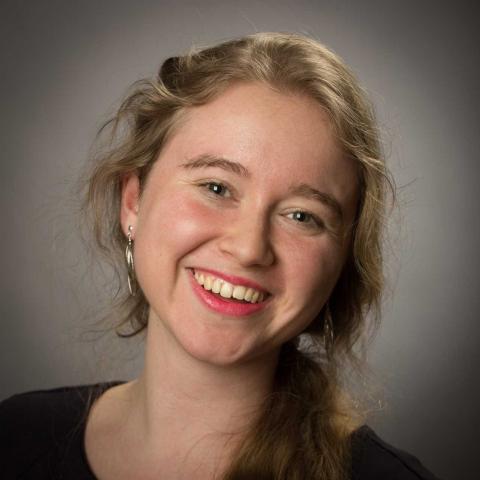ENHANCE: a data platform on food supplies and 'desired' food patterns
With the ENHANCE project, Saskia de Pee and Melissa Koenen aim to create a healthy diet for healthy people on a healthy planet. But what such a diet entails may vary by region.
Around the world, some 811 million people are going hungry. Fortunately, you notice little of this on the Tilburg University campus. AH-to-go and Starbucks shine right next to the building that houses the Zero Hunger Lab. There, on the sixth floor, people are working hard to find solutions to eliminate the hunger problem. With this idealistic goal in mind, PhD student Melissa Koenen delves into numbers and algorithms on a daily basis. She is working on the ENHANCE project, a unique collaboration between the Zero Hunger Lab, Capgemini, Johns Hopkins University in the United States of America, and the World Food Programme. Saskia de Pee is team lead systems analysis and science for food and nutrition, and heads the ENHANCE project.
ENHANCE focuses on ‘healthy diets for healthy people on a healthy planet’. Quite a few conditions in one sentence.
Saskia de Pee: “These days we talk about sustainable healthy diets, or foods that are healthy for people and the planet. This is indeed a huge challenge: food has to be healthy, produced safely, affordable, and in a form that people want to eat. In addition, the planet can’t suffer.”
Phooto: Melissa Koenen (left) en Saskia de Pee (right). Text continues below the photo.

The food situation is not the same in every country. Doesn’t that make this pursuit incredibly difficult?
De Pee: “There are even regional differences within countries! With ENHANCE, we aim to provide information that can be used to make informed decisions around food security at the national and sub-national levels. For each region, we first ask the question: what is most important here? Then we look at where we are now and how we can best achieve our goals. Ultimately, we want every country to arrive at the same end point.”
Can you give an example?
De Pee: “In the Netherlands, obesity is a problem. So, there should be healthier food, while unhealthy food should slowly disappear. In other countries, people are starving, not to mention that food has little nutritional value. There, food diversity must be increased, and poor people must have greater access to food. At the same time, in thirty years, you don’t want to have the same problems there that we have now. So, you have to consider the way the food is produced.”
And that’s where you come in.
De Pee: “We want to establish a data platform that informs and advises governments about food supplies and ‘desired’ diets, in particular. This platform contains data from four main areas: what is the cost, what is the nutritional value, how is the food produced, and what is the impact on the planet? So far, we have done analyses for Indonesia, Ethiopia, and Bangladesh; they provided a patchwork of information. Putting all the data together and comparing it is a hell of a job.”
Melissa Koenen: “You really need an optimization model that takes all the input and makes assessments. As a human being, you are able to come up with a food choice that meets certain nutritional requirements, but that’s where it ends. You won’t find the best diet achievable. The model takes into account an enormous number of aspects, which often conflict: nutritional values, cultural preferences, costs, greenhouse gas emissions... You enter all that data, and our computer program turns it into a mathematical model.”

If you know that vitamin D is never a problem in a country, it doesn’t necessarily have to be part of the diet
Melissa Koenen
And then a ready-made diet comes rolling out?
Koenen: “This is indeed how you find the cheapest combination of foods that meets all the conditions entered. But the goal is not necessarily a diet that you recommend to people. It’s more of an insight that tells people: this is really the bare minimum. Ideally, the model offers multiple options.”
De Pee: “The final decision is up to the government. We mainly want to provide insight so that people know what the latitude is and what the impact is of one thing or another. You can also see how other countries are doing. For example, greenhouse emissions are lower for the same food item. Why is that? How is that foodstuff produced there? And can we perhaps use those production methods here as well? That way, you can better understand where you can make a difference with what you have.”
What are the goals for the future?
De Pee: “By mid-2022, we want to have a version that will allow us, at the very least, to do the makeshift analysis we’ve done for Indonesia, Ethiopia, and Bangladesh more easily for other countries. We are also working on optimizations of the model. In that respect, we have a long wish list.”
And what’s on your list?
De Pee laughs: “Well, we want to better define certain nutritional values. Now, in addition to proteins and fats, we have nine vitamins and four minerals in the model. But proteins are made up of amino acids and fats are made up of fatty acids. There are also maximum and minimum values for how many vitamins and minerals you should be getting.”
Koenen: “It would be nice to put all these specifications into the optimization model, which you can then turn on and off by area. For example, if you know that vitamin D is never a problem in a country, it doesn’t necessarily have to be part of the diet. Not to mention climate effects, impact on land use, biodiversity, and the like. But it’s an incredibly fun project. When you talk about it, it automatically makes you happy.
Text: Eline Kraaijenvanger
Photo: Bram Belloni
Date of publication: 18 May 2022
